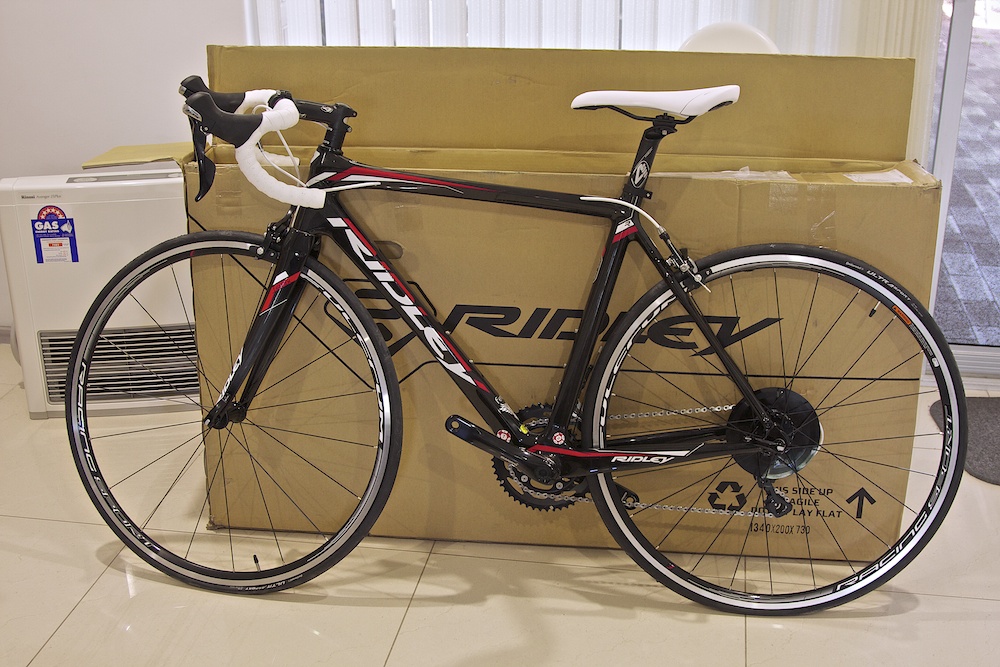Writing the previous post reminded me of something that completely amazed me when I first read of it some years ago.
It's the fact that the spokes in the upper part of the wheel support your weight, not the lower ones!
The rims and the spokes act like a suspension bridge which carry the frame of the bicycle and the rider.
I was still doubtful till the article went on to explain that a spoke is just a thick wire and, if you put a 100 kg weight on it, it will bend. But you can hang a 100 kg from it with no problems.
It blew my little unscientific mind! (Comments from my scientific friends welcomed.)


Sorry Arthur I know nothing about bicycle parts :-)
ReplyDeleteNo worries, Luke. Thanks for commenting anyway.
DeleteHey, Arthur, your memory agrees with the following explanation from https://tensegrity.wikispaces.com/Bicycle+wheel
ReplyDeleteHere's the relevant explanation.
"The hub of a wire wheel is suspended in a tension network. The axle load is hung from the top of the rim that tries to belly out. Additional tension spokes are added horizontally to resist the bulge. For circumferential stability, the additional spokes are added.
In a bicycle wheel, at any given moment the hub is suspended, hanging from the topmost spoke. Imagine if there was one wire spoke only. Its downward force would cause the thin, weak rim to buckle. What keeps the rim from buckling in a standard wheel? The other wire spokes constantly pulling in on the rim circumference--they keep it round.
All the spokes are under constant and equal tension. The tensions are preset and do not vary with the load. It is an integrated structure with each spoke depending on every other to share the load at all times. The compression of the ground to the rim is distributed through the tension spokes to the hub. Therefore, there is no direct compression link between the load on the bicycle frame and the ground reaction force. The bicycle is suspended off the ground in a tension spoke network, hanging like a hammock, and the same system works equally well in a unicycle as a bicycle or tricycle. In a cycle wheel, the hub and rim are compression elements kept apart by tension spokes. There are no bending moments in the tension spokes, which are pre stressed, under constant tension. The cycle wheel exists only as an integrated structure. One spoke will not hold up under the weight of the load.
Once constructed this way the tension elements remain in tension and compression elements remain under compression no matter the direction of force or point of application of the load. It makes no difference where you compress the rim of the cycle wheel; the load is equally distributed through the spokes to the hub. The rim of the bicycle is a geodesic, connecting the many points of the spoke attachments, the more spokes the rounder it gets."
I have learnt something new.
This is exactly why I love the bicycle. It is such an elegant and beautiful machine. Then there is the use of ball bearings sitting in cups and cones being used to regulate their tightness, but that's another story. Sadly, that beauty has been replaced by sealed bearings, which is conveniently disposable.
DeleteInteresting. All I know is the spokes keep the wheels round - can;t do without a single one, dunno much else about them.
ReplyDeleteThat's right, they all work together to keep the wheel round and true.
DeleteThe human mind is fantastic can farthom out all these forces and how they act/react together. We all only use 15% of our mind, think what can be done if all 100% is used !! Maybe the world would be a better place than it is now?
ReplyDelete